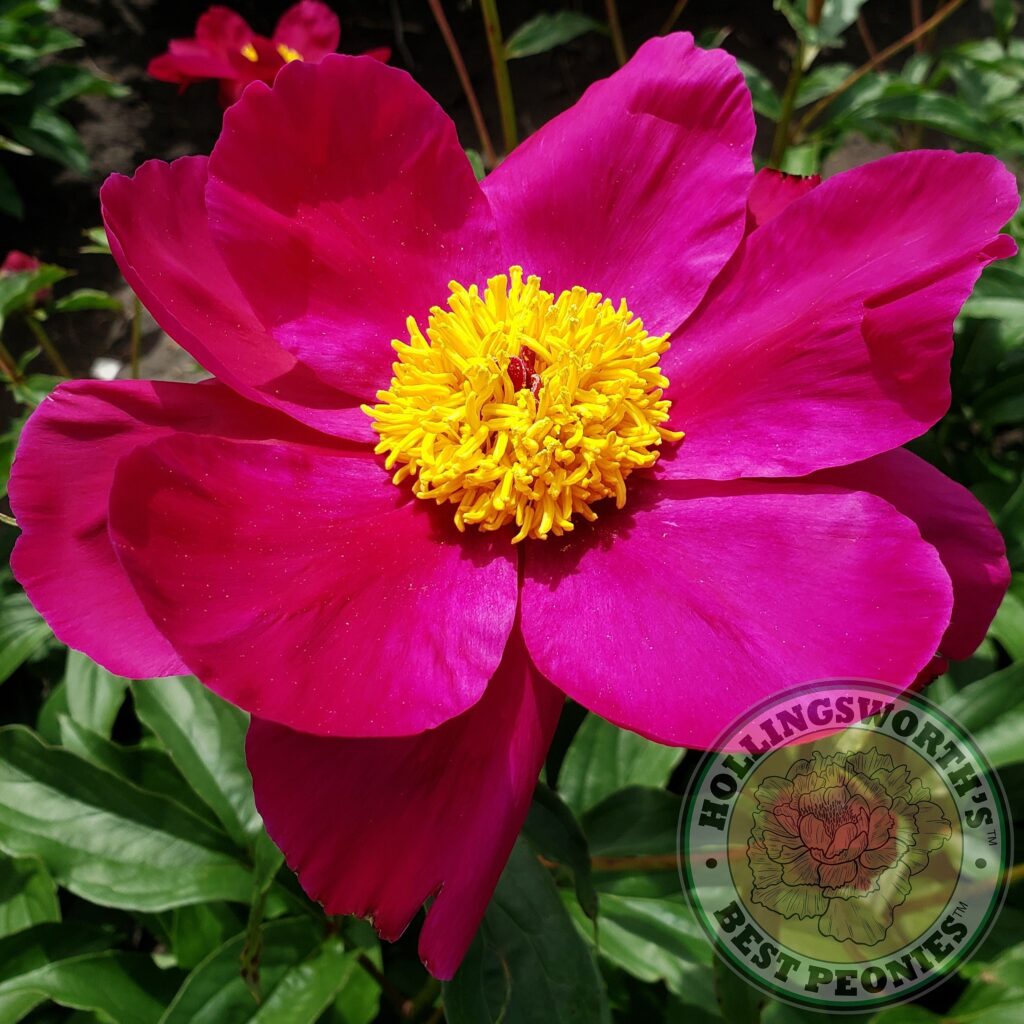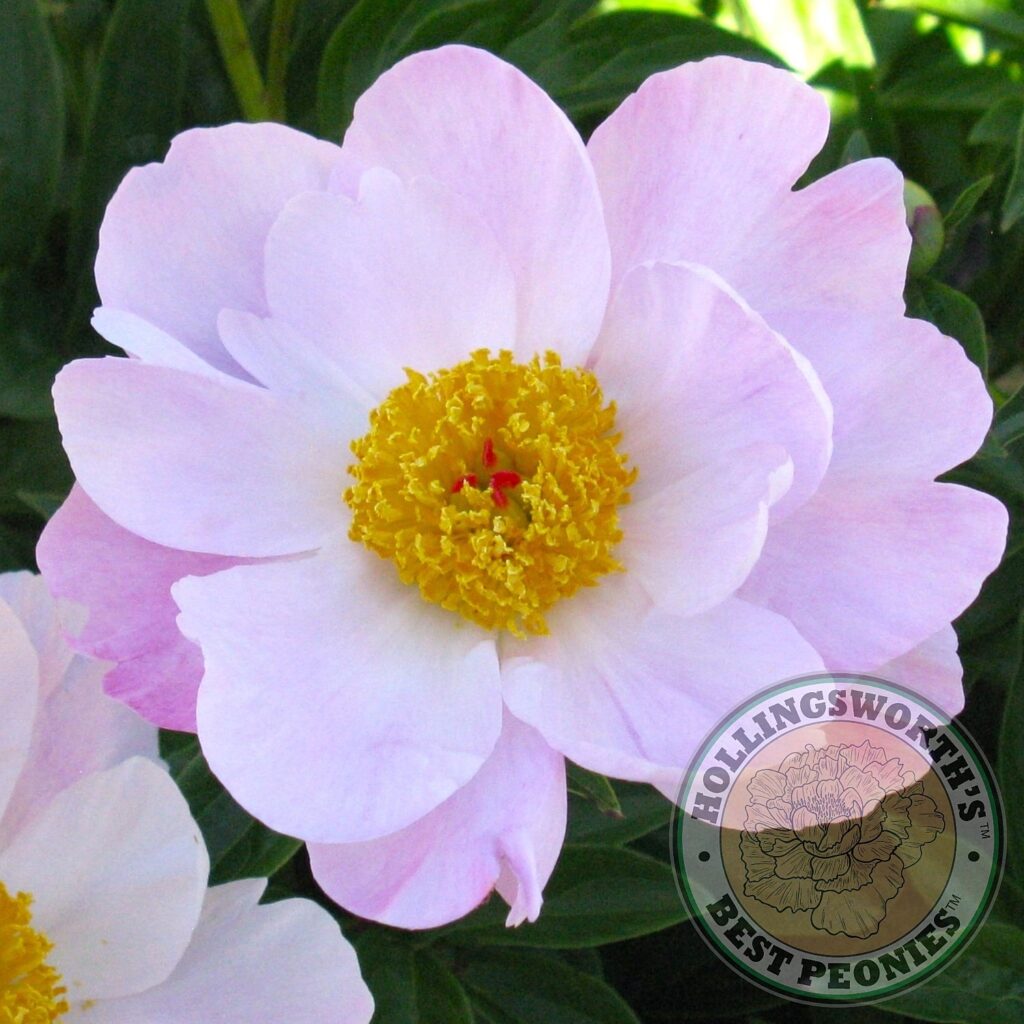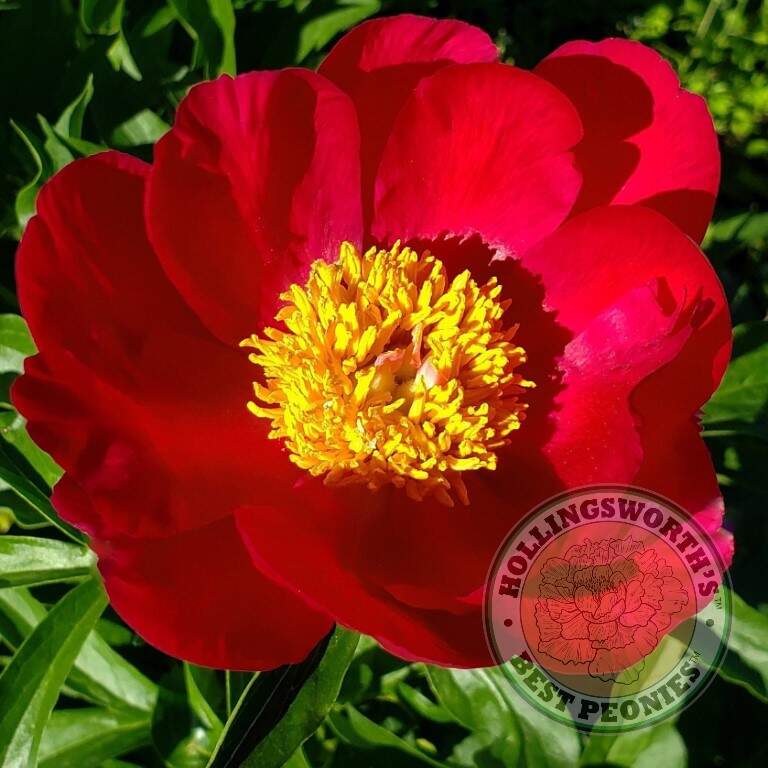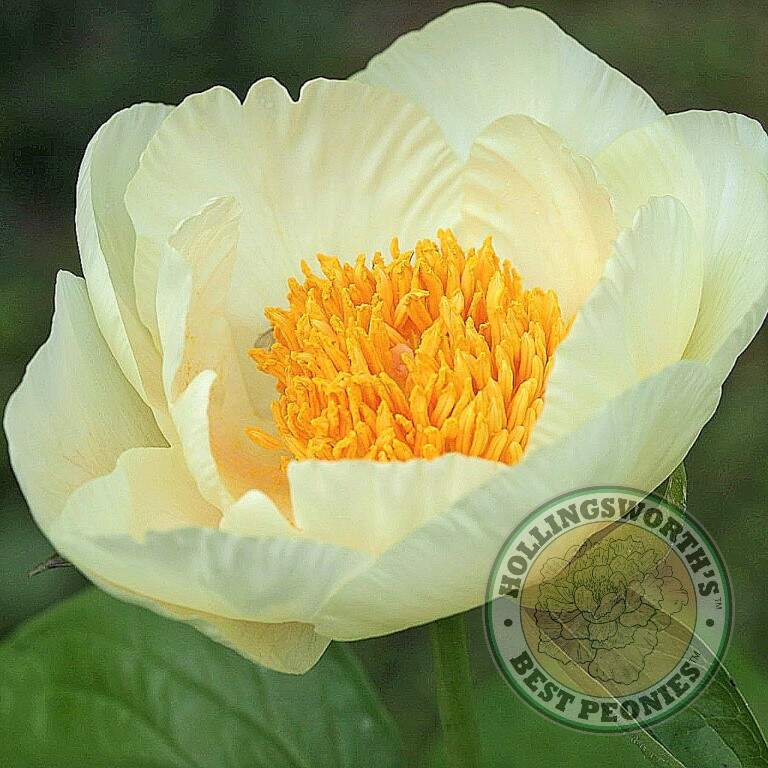Your cart is currently empty!
Peony Flower Anatomy I

Peony Flower Anatomy I
What Makes a Peony Flower Luxurious?
By Don Hollingsworth
Rich luxury of the flowers explains why peonies are wanted, why loved and why they are known in history of their cultivation for many centuries. In our day we choose them for their ability to produce abundant large and lovely petals in a wide range of showy colors. Yet, also in our time we know the natural species ancestors of our favorite flower are quite likely to have as few as five petals per flower.
So, how has the peony come from a natural species of five petals to the sometimes hundreds of petals seen in heavy flowers, such as the peony MOTHER’S CHOICE (Glasscock, 1950)? The short answer is human intervention, this having been enabled by showy mutations of flower parts leading to distinct variations. During the many centuries of peony cultivation, desirable mutations have been accumulated and preserved. Using deliberate plant breeding efforts and selection among seed-grown plants, such desirable natural mutations have been combined and recombined to create the range of ornamental variation now in horticultural commerce.
The details of flower form are especially important in providing clues by which to verify cultivar identity. We all recognize the state of growth of the plant causes variations in the size of a flower and the volume of its parts. Botanists have long recognized, however, that the sexual parts remain constant, therefore these parts of the flower are most important for diagnosis of identity. The purpose of this article is to increase awareness of how data on peony differences can empower the purchasers to verify that the plants received are correct for the name. In this spirit I will describe and illustrate the anatomical features seen in peony flowers. Because of the length, this article will be published in installments. The first installment considers the peony species flower form, followed by illustration and discussion of major heritable mutations leading to increased fullness seen in the flowers of most modern peony cultivars. The plan is to compile and illustrate a glossary of terms useful for cultivar description and the identification of unique characteristics to assist in verifying cultivar identities.
It is a principal goal of the APS nomenclature function to establish and publish sufficient data on individual peonies to enable verification of correct cultivar identity. Evidence of this goal will be seen in the current edition of the APS Cultivar Registration Form. Readers are encouraged to visit the web site of the American Peony Society and compare flowers of available peonies with the registration form’s schedule of items as a further exercise in building increased awareness as to how the study of peony flower anatomy may be personally useful.
Peony Flower Terminology
The Single Form Flower
The American Peony Society formal classification “Single” applied to cultivars is also generally applicable to flowers of the botanical species. The most obvious difference is seen in the increased number of flower segments characteristic of commercialized cultivars.
The terms listed here are presented as they occur in the flower ‘Lavender’ (Saunders, 1939) starting from the bottom, then upwards.
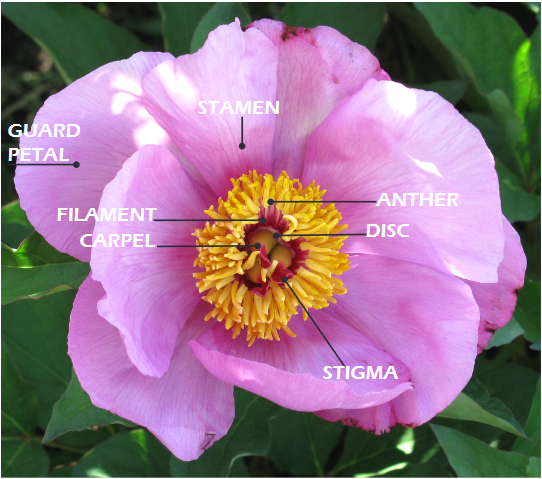
Receptacle (not shown)
The slightly domed and flared area forms the foundation for the flower parts and through which they receive their life needs by vascular connections.
Sepals (not shown)
These tough green, often stained red, floral segments serve as bud covers, being protection for the more fragile inner parts until the latter are mature and the flower ready to open. Outermost sepals are furnished with leaf-like appendages. They repeat inward, becoming progressively smaller, usually absent at or before the innermost sepal is reached. The quantity of sepals and the prominence of the leaf-like appendages vary between species and their derived cultivars. Plant taxonomists note sepals are fewest in the more evolved peony species native to Southern Europe. Peony sepals typically have nectar-producing glands, the sugary output attracting sweet-eating ants.
Stamens
Stamens arise in bundles from the receptacle, the bundles together forming a band of contrasting color, band width extending from base of the guard petals inward to the staminal disc. The natural stamens in peony flowers have two well-defined parts, the filament (stem) and the anthers, one on each side at the upper end of the filament, enclosing the pollen capsules. The anther cases are almost always creamy to yellow in color, yet in certain lineages of Paeonia delavayi their outer sheath is sometimes the same deep red as the petals. Filaments may be a translucent light-yellow color or furnished with reddish pigments from the base, variably extending upwards. Occasionally the reddish pigment extends the entire length of the filament, see the flower of BURMA RUBY (Glasscock, 1951)
Disc (also, Staminal Disc)
An often, inconspicuous ring of tissue at inner margin of the stamens, furnished with irregularly spaced “nodules”. These kernels are often seen to be the chief evidence of the organ. The nodules may contain reddish pigment but are often creamy white in color. In some species they may serve as nectaries, by which insects are attracted to the opened flower. In woody peony flowers and their Itoh Group hybrid descendants, the disc is expressed as a sheath, partially or fully enclosing the carpels.
Carpel
The principal part of the carpel is the ovary of the peony flower, becoming the seed-containing fruit when ova are successfully fertilized. In peony flowers, carpels normally occur in multiples, but remain separate, not united. The outer wall at flower opening varies in depth of color from creamy white to green, but may develop darker, reddish-purple pigments when exposed to the sun. The surface may be smooth or covered with fuzz or small hairs in various concentrations in different cultivars. “Pistils” is a now out of favor alternate name for carpels.
Style (not shown)
In the peony flower, the style is the upper part of the carpel, its beginning is the short “neck” at the top of the ovary chamber, the size enlarging above. However, for our purposes of capturing data wanted for identification of a particular peony cultivar, the common practice is to include as one the style and stigmatic surface (the latter is where pollen grains are nurtured for their germination). We apply the term “stigma” to the whole, for our convenience in specifying the variations of color and shape. In botanical science, however, differences in anatomy of the style are important for defining genera and species. In botanical terminology the peony stigma is the moist, nutrient surface at the edge of the style upon which the pollen grain can germinate. The style provides the channel through which the growing pollen tube reaches the ovary for delivery of the male germ cell.
Stigma
As set forth in “Style” above, for recording data on peony flower differences, we commonly include as “stigma” all the upper extension of the carpel. Differences in color and shape of these parts tend strongly to remain constant regardless of the plant’s state of growth. When the organ is present, it can help to separate one cultivar from another. So, for our purposes in describing named peonies, “stigma” means all of the carpel anatomy from top of the ovary chamber to the stigmatic surface. Nevertheless, for the purposes of controlled crosses in peony breeding it is important to know the pollen can only be effective when applied to the moist stigmatic surface, an area to be found somewhere at the edge of the organ. Depending on the characteristic shape of the seed parent style arm, the stigmatic surface may be found at top, to the side or somewhat down facing.
